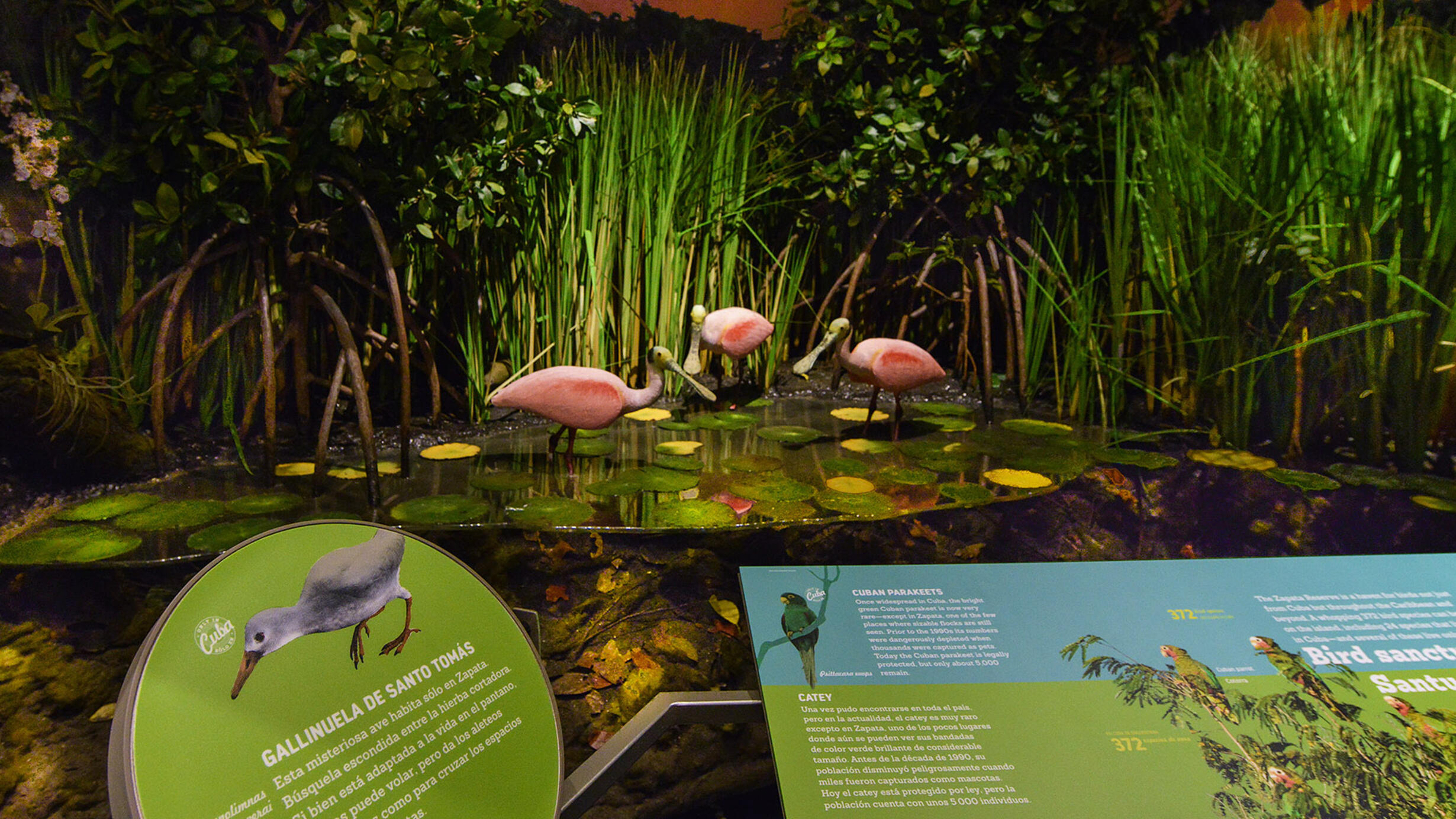Zapata Wetlands
Part of the ¡Cuba! exhibition.
 This walkthrough reconstruction represents the Zapata Biosphere Reserve, which contains the largest and most important wetlands in the Caribbean.
This walkthrough reconstruction represents the Zapata Biosphere Reserve, which contains the largest and most important wetlands in the Caribbean. ©AMNH/R. Mickens
Part of the ¡Cuba! exhibition.
Crocodile Country
The Zapata peninsula contains the largest and most important wetlands in the Caribbean. Covering 1.5 million acres (6,000 square km), the immense Zapata Biosphere Reserve includes marshes, peat bogs, mangroves, coral reefs, and forests that support a complex web of life, including frogs, turtles, fish, shellfish, crocodiles, birds, and countless plants and insects, making its conservation a top priority for the entire region.
© Shutterstock
Crocodile Cousins
Cuba is home to two species of crocodiles—the Cuban crocodile and the American crocodile. Both have suffered steep declines from overhunting and habitat loss. But the Cuban crocodile, with its more restricted distribution, is now critically endangered. Cuban scientists, collaborating with researchers around the world, are now using DNA sequencing tools to help understand and conserve these ancient species.
© J. Cancalosi/AGE Fotostock
A Walk in the Wetlands
All too often, wetlands and marshes are ignored, forgotten, or drained for development. But in Cuba’s Zapata National Park, a vast wetland ecosystem supports many important species and diverse habitats. This unique setting is home to many plants and animals found nowhere else.
© MAP/A. Descat/AGE Fotostock
Migration Way Station
The protected wetlands of the Zapata peninsula attract hundreds of thousands of migrating birds. Many birds winter in Cuba, and many more use the island as a stopover when migrating between North and South America.
Bird Sanctuary
The Zapata Reserve is a haven for birds not just from Cuba but throughout the Caribbean and beyond. A whopping 372 bird species can be spotted on the island, including 24 species that live only in Cuba—and several of these live only in Zapata.
© G. Bartley/AGE Fotostock; © G. Bartley/AGE Fotostock
Check out more of the exhibition—explore Cuban art.
Top photo: ©AMNH/D. Finnin